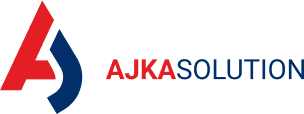VDA 6.3:2023 – Efficiency and transparency of audits in the automotive industry
Quality standards in the automotive industry are unrelenting. The key process auditing tool, VDA 6.3, has undergone significant changes in 2023. Have you incorporated them yet? Are you familiar with them? Or are you just entering the VDA waters? In this article, we’ll introduce you to the main changes.
VDA 6.3
The VDA 6.3 standard is widely used in series production, especially in the automotive industry. It originated in Germany and was developed by the German Automotive Industry Association (Verband der Automobilindustrie). Hence the abbreviation VDA.
It currently brings together over 600 automotive manufacturers and suppliers who are involved in the development of the standard. The goal is trouble-free, modern, reliable, safe cars. So if you want to supply the automotive industry, or are already supplying, you can’t do without knowledge of the requirements of the VDA standards, or your journey will be more arduous.
Do you know that…
Every company supplying the Volkswagen Group must have a representative with a valid VDA auditor certification. This person is then responsible for carrying out internal VDA audits. Smaller companies, in particular, may find it costly to train and maintain these individuals within the company. Therefore, Ajka also provides third-party internal audit services.
VDA 6.3 was first published in 1998. Further updates were released in 2010 and 2016. The most recent change came a year ago. The current edition is VDA 6.3:2023.
What has changed in VDA 6.3:2023
- Audited processes will need to be more integrated with other quality management systems in the company (e.g. VDA Automotive SPICE® and VDA MLA).
- The changes reflect the growing importance and frequency of online remote auditing.
- In the automotive industry, software and programs for development, design and production are growing in importance. The standard and its requirements reflect this fact.
- The standard deletes the chapter Audit process (which is described in ISO 19011), Process audit services (this part will be addressed in a separate publication VDA 6.8).
- Purchasing related requirements have been added to P3 and P4. (Finally!!!)
- The questionnaire has also changed (from 58 questions there are now 59 in the questionnaire, the definition of questions marked with * has changed, the questions related to P1 Potential Analysis have been reformulated).
The VDA 6.3 process audit standard has undergone a complete revision and introduces several major changes that should be implemented by all quality managers in companies supplying the automotive industry.
What remained the same in both versions of VDA 6.3
Despite significant changes, many parts remain unchanged.
- It uses a three-level classification for the overall assessment – A, B, C.
- A scale of 10-8-6-4-0 continues to be used to rate each question in the questionnaire.
- The structure of the questionnaire has remained the same.
- The tortoise model continues to be used.
How to deal with changes
Understanding and dealing with change can sometimes be more difficult. Before you start implementing the requirements of the standard, first do an assessment of your existing processes. From these you will see what changes will be needed. Everything takes knowledge and ultimately experience. Therefore, treat yourself to training that will familiarize you with the new requirements. Properly set up courses will help you implement changes to existing processes immediately.
Even if you are not sure you are going in the right direction at such a time, find experts to work with you. At AJKA-SOLUTION, we have experienced project managers who are familiar with VDA 6.3 and can help you directly implement the requirements of the standard into your processes.
